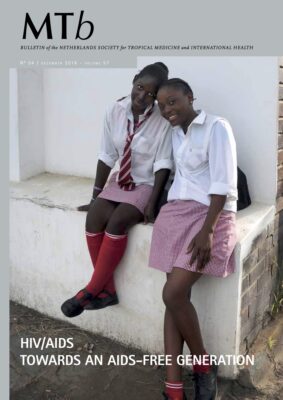

The first hint that a new disease was killing people came in 1981. What followed were decades of tragedy. During those years, the world was still woefully short of scientific understanding of all aspects of the disease. All people infected with the Human immunodeficiency virus (HIV) were certain of dying of acquired immunodeficiency syndrome (AIDS) or AIDS related conditions, sooner or later. Treatment was limited to treating opportunistic infections and AIDS related malignancies, but with major difficulties in diagnosis and treatment. When the first anti-retroviral drugs became available in 1987, they...
The first hint that a new disease was killing people came in 1981. What followed were decades of tragedy. During those years, the world was still woefully short of scientific understanding of all aspects of the disease. All people infected with the Human immunodeficiency virus (HIV) were certain of dying of acquired immunodeficiency syndrome (AIDS) or AIDS related conditions, sooner or later. Treatment was limited to treating opportunistic infections and AIDS related malignancies, but with major difficulties in diagnosis and treatment. When the first anti-retroviral drugs became available in 1987, they had little effect. It took 15 years to discover more powerful antiretroviral drugs, with acceptable side-effects; when given in a combination of three active ingredients they can suppress all the different mutations that occur in the complex virus. Antiretroviral therapy (ART) with three drugs (triple therapy)was widely initiated and it gradually became possible for people with HIV to live a normal live with a chronic condition. To date, tremendous progress has been made. But many challenges remain, and HIV continues to be a major global public health issue. In 2017, an estimated 36.9 million people were living with HIV, the vast majority (66%) living in sub-Saharan Africa. That same year, 940,000 people died of AIDS-related conditions, which is about half the number that died since the peak in 2004 (1.9 million). National governments, international organizations and aid agencies keep fighting to stop the HIV/AIDS epidemic. UNAIDS stated that ‘it will be impossible to end the epidemic without bringing HIV treatment to all who need it’. In particular the roll-out of ART in Africa, which started in 2004, was a major challenge. In 2014, UNAIDS set the ambitious ’90-90-90: treatment for all’ targets: ‘by 2020, 90% of all people living with HIV would know their HIV status; 90% of all people with diagnosed HIV infection would receive sustained antiretroviral therapy; and 90% of all people receiving antiretroviral therapy would have achieved viral suppression’. In subSahara African countries, national programmes adopted the 90-90-90 targets to improve HIV healthcare. Two articles in this edition highlight experiences and challenges in Lesotho and Malawi, two countries with a high burden of disease. Similar to other viral infectious diseases, such as smallpox, poliomyelitis or infection with Ebola virus, also in HIV infection there are people who survive the infection, even without treatment. But there has never been a documented case of someone infected with HIV who cleared the virus. And why is there not yet a vaccine for HIV, like for other infectious diseases, or a prophylactic drug? Two articles in this edition focus on prevention of HIV. One discusses the bumpy road towards the development of an HIV vaccine, the other pre-exposure prophylaxis, which has turned out to be highly effective. Globally, an estimated 1.8 million children are living with HIV. Children in particular are extremely vulnerable to HIV related diseases. Fortunately, over the past years, access to ART for children has increased considerably. How is it possible that only about 52% of the children actually receive medication? Two articles focus on challenges in the treatment of children and their approach for improvement. The column in this edition is about stigma and discrimination, which people with HIV often face from the moment they are diagnosed. We do not know yet when an AIDSfree generation will become a reality. To date, already much improvement has been achieved. However, the fight against HIV/AIDS continues. It is our obligation to the 39 million people worldwide who have died from AIDS.
Andrea van Meurs
Ed Zijlstra
Disclaimer: all views expressed in this journal are of the authors only and are not necessarily shared by the editors of MT. Letters and articles may be edited for purposes of clarity and space.




















































